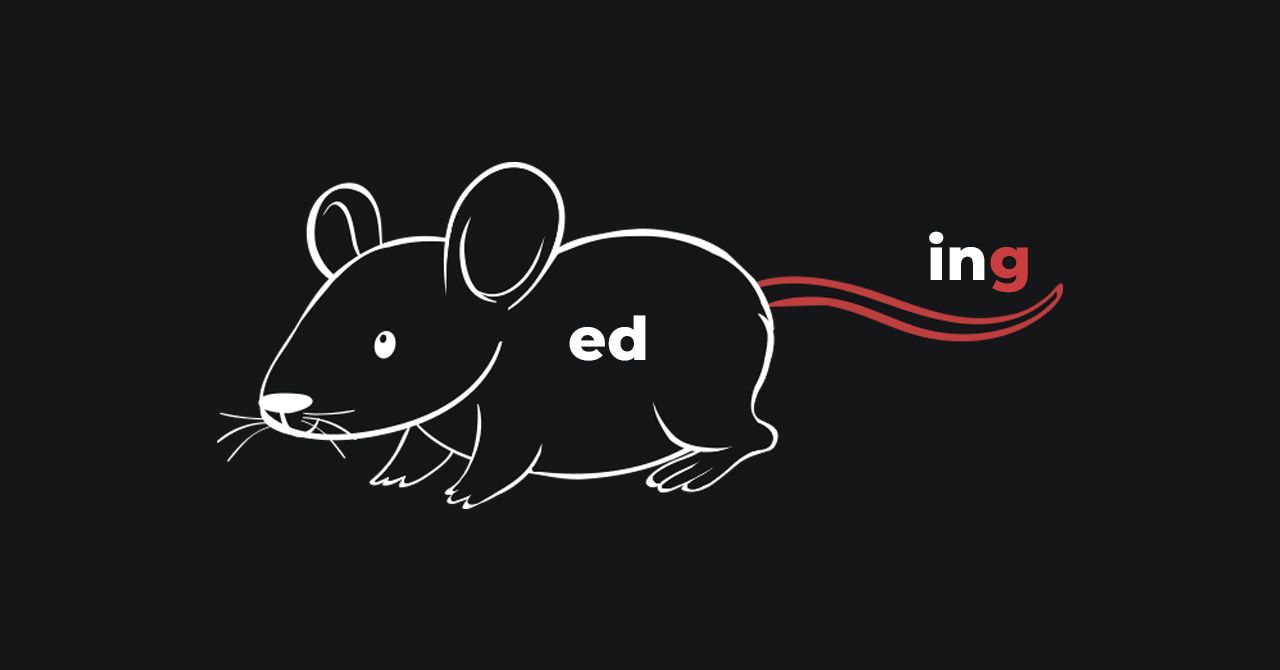
Animal Explanation of Adjectives Ending in “-ING” and “-ED”
When we try to understand the endings of -ed and -ing, we usually end up in a situation where we can’t make a difference between these two, even if it has been explained to us in detail.
As a foreign student, you might definitely have some difficulty choosing the right suffix for a word. When we try to understand the endings of -ed and -ing, we usually end up in a situation where we can’t make a difference between these two, even if it has been explained to us in detail. Let’s put an end to this right now!
Adjectives with “-ING” and “-ED”
In the beginning, I would like to say that we won’t discuss any routine grammar here. All we need is practice and understanding of the topic.
That’s why I suggest you have a look at these examples:
(1) I don’t think you should be terrified of mice.
(2) The mice must think you’re even more terrifying than you think they are!
(P.S. terrify = scare)
Try to think about underlined words. Do they mean the same thing or are they different? What makes them the same/different? Can you give other examples of this pattern that you’ve noticed?
Adjectives?
Right… Now, before we answer those questions, let’s define an adjective and then move on to these -ED/-ING words to remember them once in a lifetime.
Adjectives are words that modify a noun and change its meaning. You can usually find them right before the noun (e.g. a beautiful painting) or after the verb TO BE (which is usually is/am/are/was/were or be; e.g. The dog is small.).
Through animal world to grammar
Now imagine a mouse. Yes, you got it right. A simple live mouse with a long tail. It has the same tail as the letter g in the suffix -ing, right?
Then imagine that this mouse is running somewhere on the cupboard (of the neighbors’ house, of course) and waving its tail so much that it drops everything it touches.
And now this mouse runs fast towards you and its tail touches you. Your mood changes. You can say that you are affected by this mouse, its tail!
Speaking of this mouse, does it look like it’s affected by everything its tail does? No! It doesn’t care, it probably doesn’t notice your mood changes but it does change everything around.
Put it all together!
That was a great story, wasn’t it? Now let’s go back to the sentences we discussed above:
(1) I don’t think you should be terrified of mice.
(2) The mice must think you’re even more terrifying than you think they are!
The same thing that the mouse does in the story, the ending -ING does with the adjective. The word terrifying in example (2) has the same tail (letter g) as the mouse in the story and this word means that the noun (you) performs an action (terrify) that affects everything (the mice) but the noun itself (you).
And at the same time what happens to everything (you) in example (1) that is affected by our mouse from the story? Everything (you) is affected by an action (terrify) performed by the mouse that isn’t mentioned in the sentence (1).
Put it simple!
Look! Here’s that mouse from the story:

You can see -ing above its tail which means that if the adjective has this suffix, it affects everything it modifies (nouns).
Example:
The movie was exciting.
(It affected=excited me. Was the movie excited itself? No.)
You can see -ed inside the mouse which means that if the adjective has this suffix, the noun it modifies is affected by something that has “a tail” (-ing) but may not be mentioned.
Example:
I was excited by the movie.
(I was affected=excited by the movie. Did I excite anyone? No. What was affecting me? The movie. It was exciting. The movie is “the mouse.”)
Returning to the questions that were asked at the beginning of the article, were your answers similar to the ideas that we discussed? Does this article help you better understand the topic?
I’m an EFL & Russian teacher with MA in Linguistics from the Polish University. Teaching process for me is similar to the creative flow where results and comfort during the lesson are equally valuable

